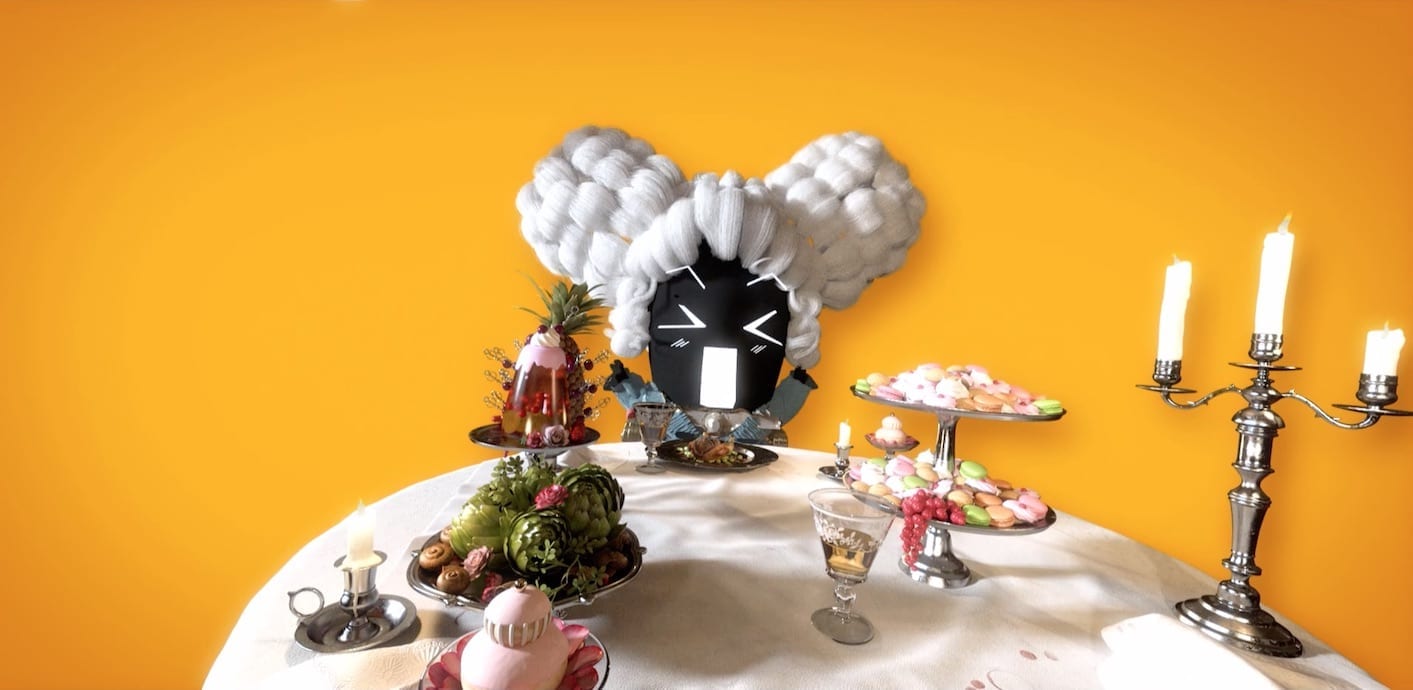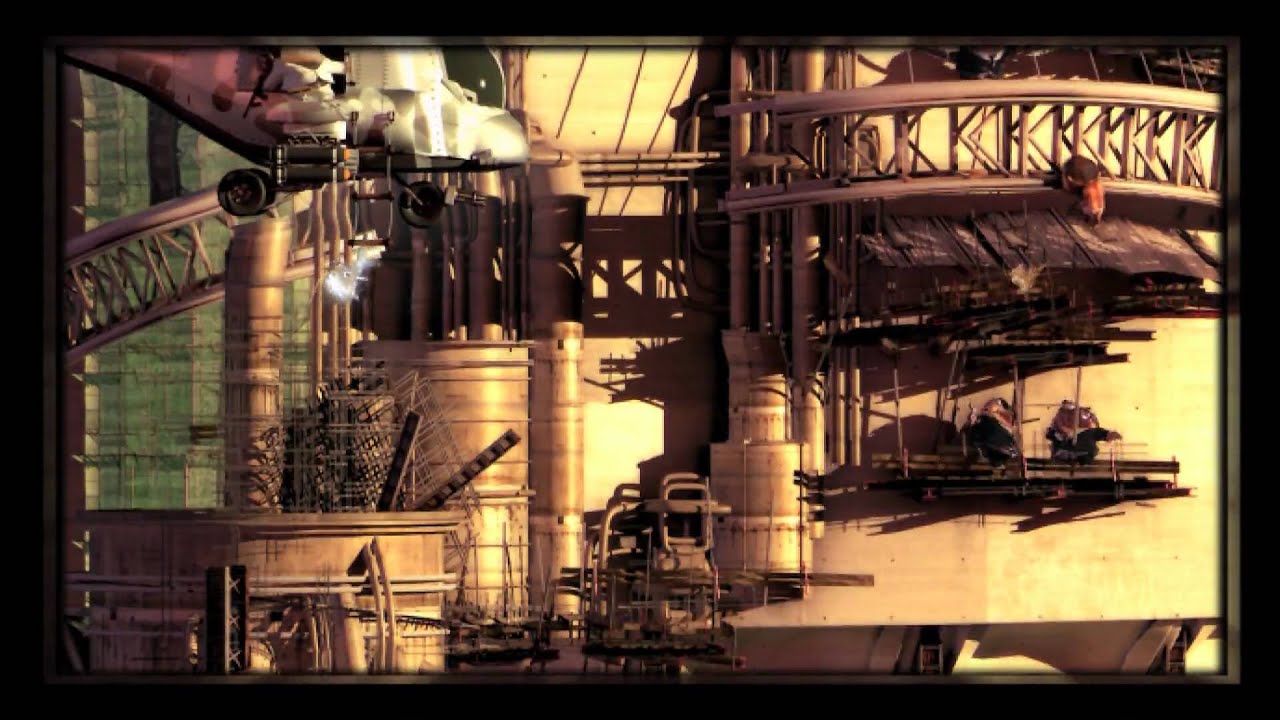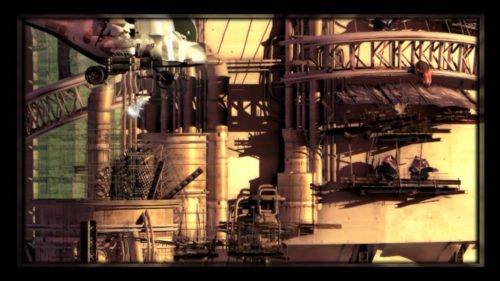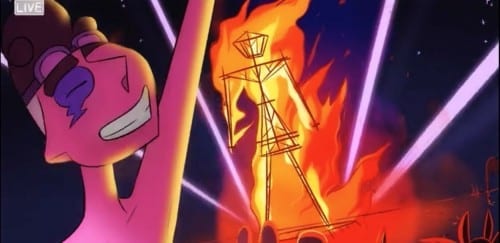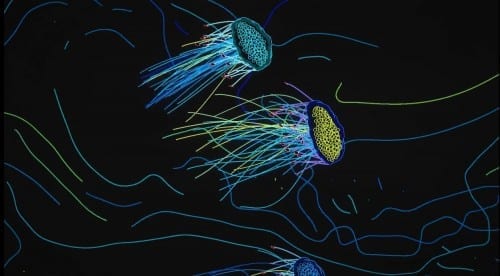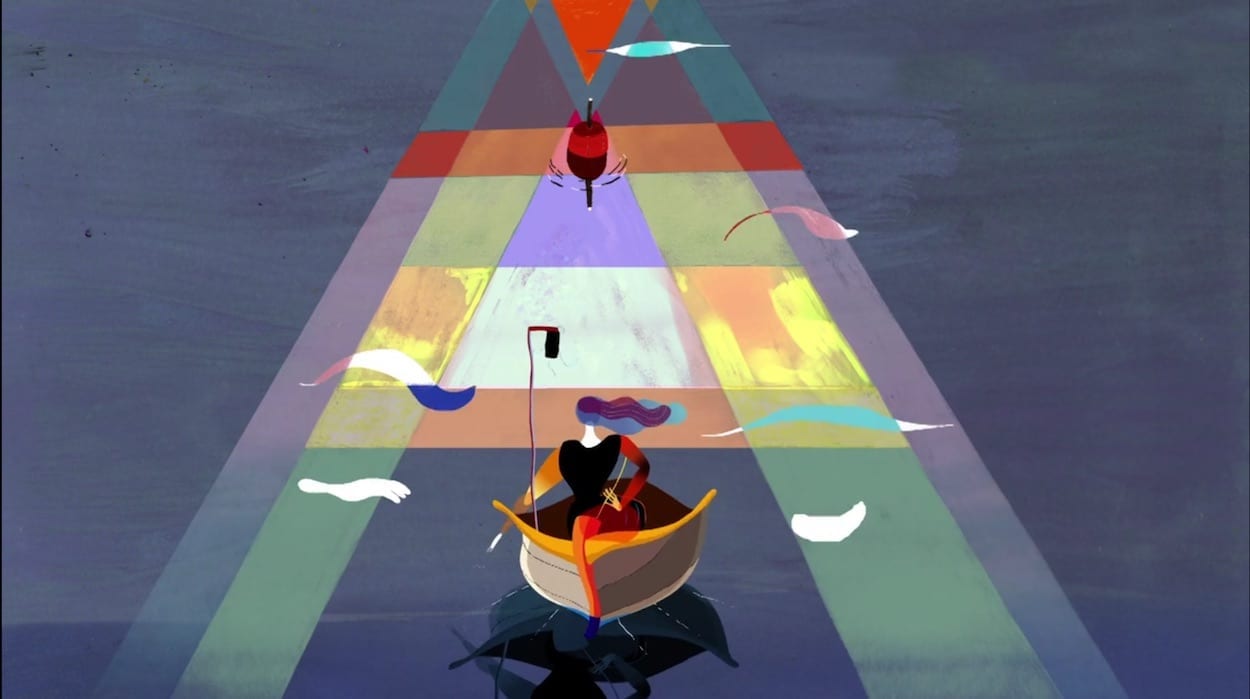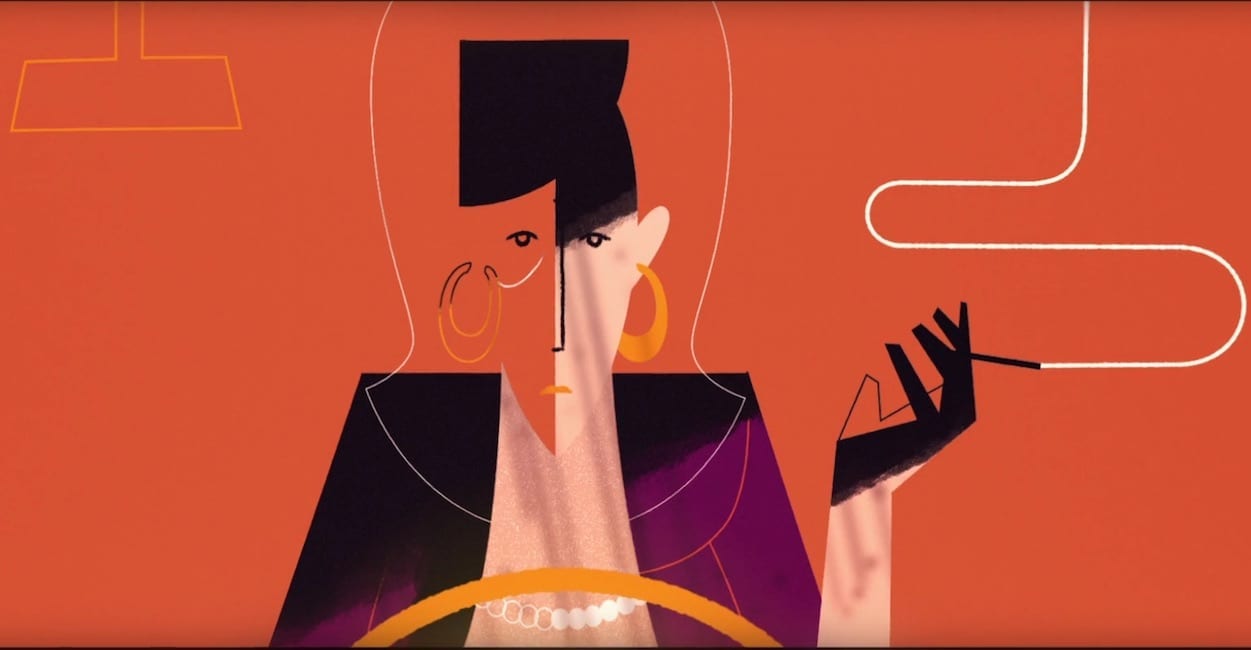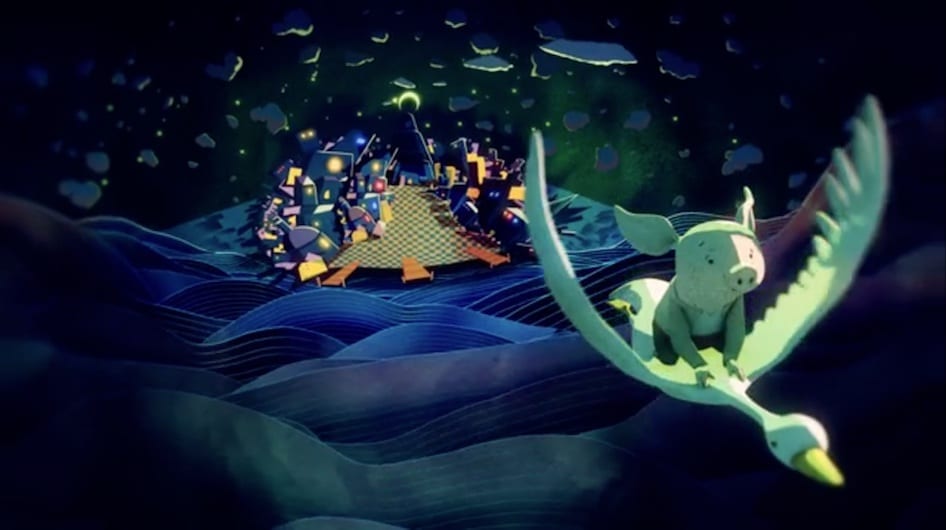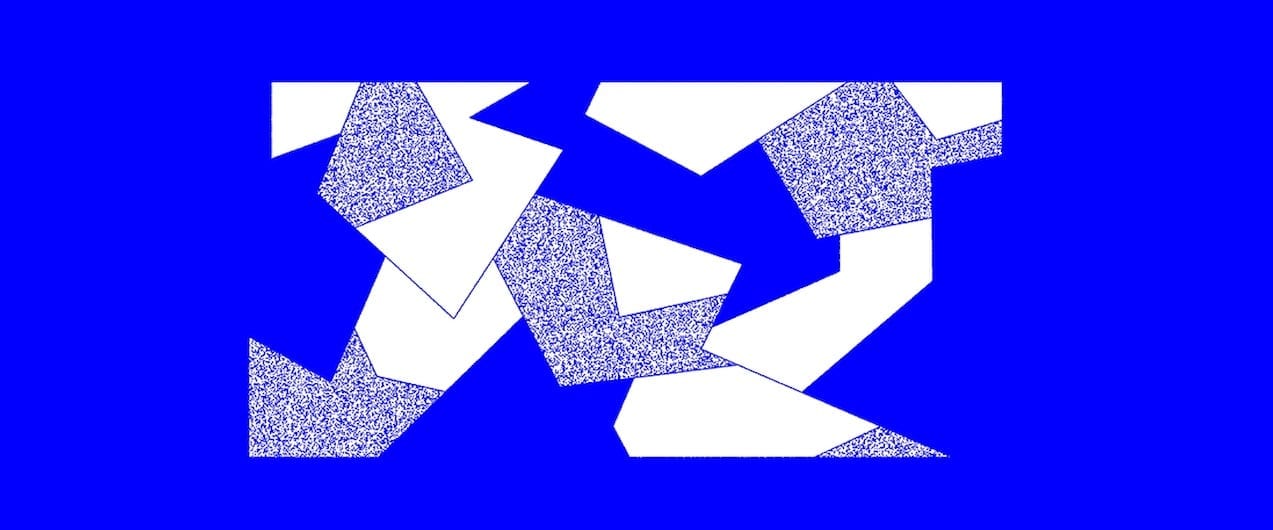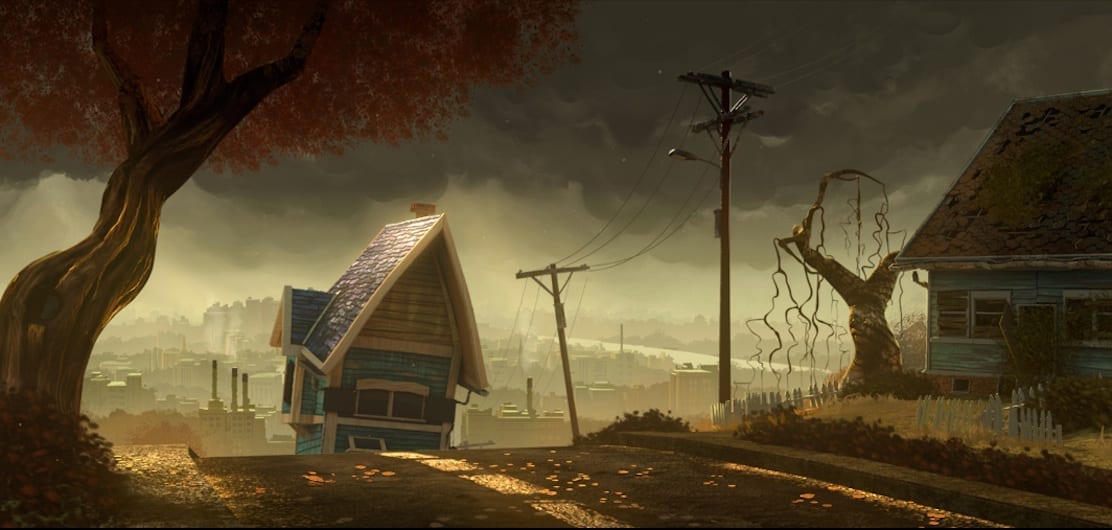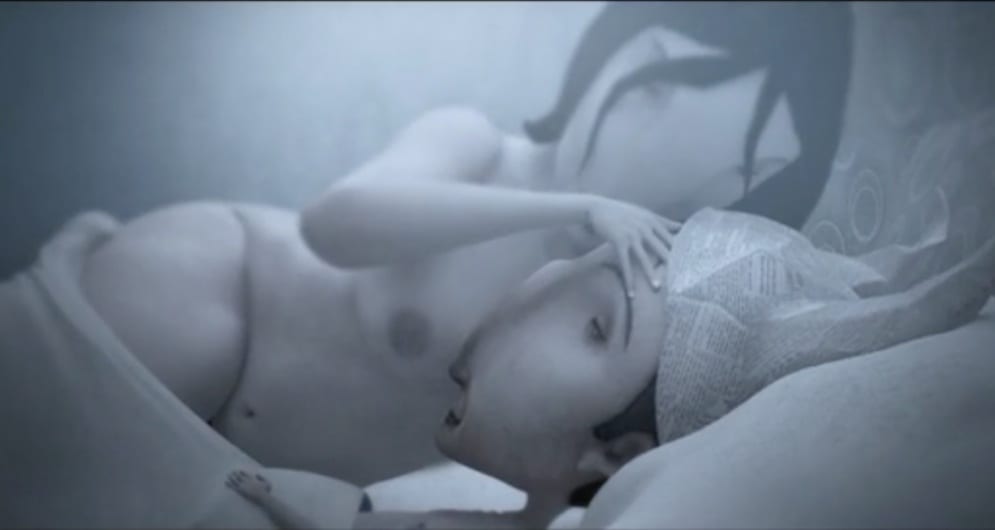What was your trigger for making this short film, Symphony of Two Minds? Your graduation film 8Bits also addressed the confrontation between two dimensions / universes in video games, what was behind your decision to re-explore these themes with the animation world?
Trying to find a mix between totally different influences and making it work has always been a big passion of mine. That’s what my last short 8Bits was also about. This time I really wanted to experiment with a different style of direction, trying to find inspiration in a different kind of movie.
I always found that in 3D animation we tend to be stuck in rigid directing styles, like the “Pixar style” which works really well, but lacks the diversity and audacity that you would find in independent live action movies.
More experimental ways of approaching dialogue scenes, camera motion or actor direction; most of the time we tend to rely on tropes that we know work, and that has to do with the way we produce these films. My idea was to find a different way to interpret the references we use in animation, bringing the random nature of traditional editing back.
What was your creative process and team organisation to make this project ?
Doing animation is so much work that it usually leaves little room for experimentation with direction. In a live action movie there are buffers between what the screenwriter originally intended and the final result. Actors bring interpretation to their characters, sets and locations turn out to be different than expected, and weather and technical difficulties can get in the way. There is a lot of randomness that comes into play so directors end up filming a lot more takes than they need. All those takes are then brought together and a new interpretation of the film is done during editing. Lots of famous scenes came out enriched from this process. Whereas in animation every shot is pretty much settled in early layout, so every cut and editing idea too subtle to make it on a storyboard usually gets thrown away.
My approach was to skip the storyboard phase and skip directly to a 3D previs. I’m an animator so I was able to set up the scene with the rough actions going on, then I could act as a director and move around the scene with my camera, trying to find an interesting angle, and rendering a lot of extra previs footage.
I put a lot of emphasis on letting mistakes and randomness happen with my animation, stuff that you can reinterpret afterwards in a different manner. I then recorded myself saying different lines of dialogues, and at that point I could make actual editing again.
It’s like having a lot of different takes with the same actors, which is really exciting in animation. Sometimes you find yourself using footage in a totally different way to what you intended. You can try stuff you’d never have thought of in a storyboard: cut in the middle of a phrase, screw up the framing of the character, having your main action off-screen, etc. I really enjoyed that part of the process.
This film was originally supposed to be longer, when did you realize you had to rethink the project and why?
It started as a much longer project about two people traveling through time, fleeing from a giant robot with an important focus on the seemingly unimportant scenes, the day-to-day part of the trip, the little gestures that make a relation between two characters feel real. At some point we did realize that such a project would be too big for the quality we were aiming for, so we decided to focus on one of the scenes and find out if that style would be working at all.
I wanted to keep the ambiance of a longer movie, the feeling of jumping right in the middle of a much bigger universe, where characters already went through a lot, where the settings and ambiance makes you want to stay a little bit more and just see what happens next. We traded a more traditional short movie storytelling for a stronger statement in favor of a different feel of animation.
Please tell us more about your background and what brought you to animation and CGI ?
I come from a CG school in the north of France called Supinfocom where I graduated in 2010 with the movie 8bits. I then worked abroad in London and New York for a couple of years before coming back to Paris. I tried bigger studios but couldn’t find the creative freedom I wanted, I ended up liking my experiences in smaller studios a lot more. Mainly my work is to find an angle on a project and do previs from that, but I like to be involved in a lot of the different parts of the process, from animation to compositing.
What’s next for you? Are you already thinking of a new short film ?
For this short I went with a very high end 3D with lots of details. When you deal with so many technical details, you tend to lose focus of the movie as a whole. What I really want to do now is find a way to produce content much faster, so that I can try different approaches and get feedback. Trial and error is a necessary process to improve your skills but it’s a lengthy thing to do in animation.
